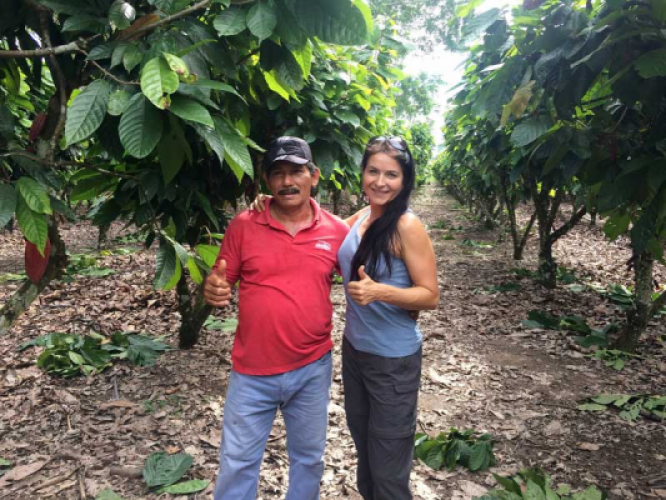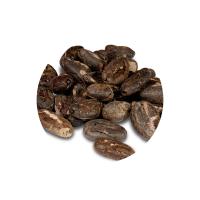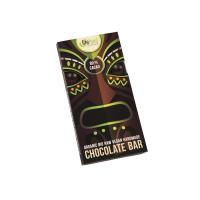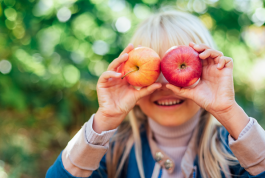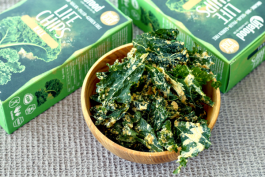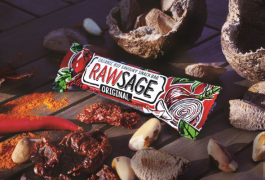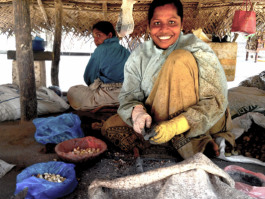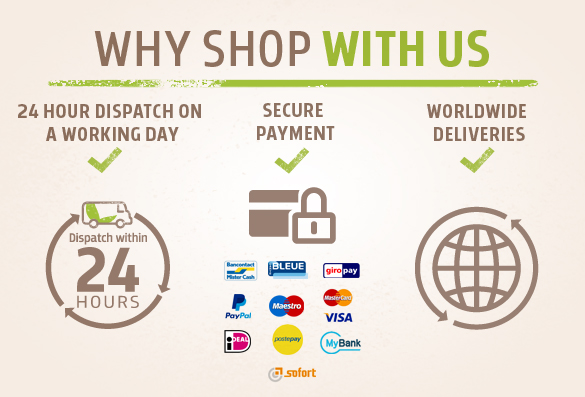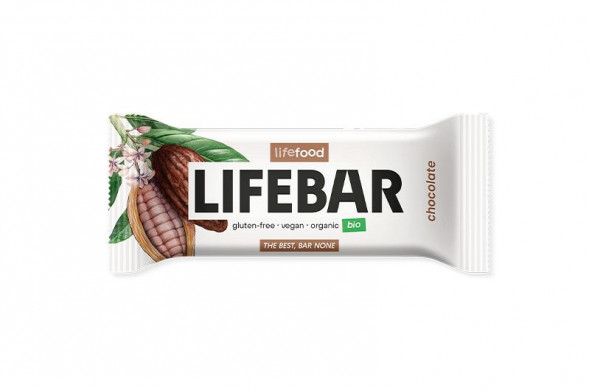At Lifefood we do a lot of things differently. We revive brownfield land instead of destroying new fields, we use green electricity and only the best ORGANIC RAW ingredients to make our products. We also care about our relationship with farmers. Lifefood owner, Tereza Havrlandová, personally visits our suppliers, farmers and producers to oversee the quality of the raw ingredients - to see how they are processed, and to check the working conditions of the people who grow them.
Fair Working Conditions and Healthy Soil Go Hand in Hand
It is very important to us that the workers get a fair and decent wage which allows them to live a dignified and promising life. At the same time, we choose partnerships with companies where our planet Earth is considered an equal partner and farming does not destroy it, but rather benefits it. So we only work with organic farmers who grow their crops on smaller farms. And thirdly - the main reason we do things differently - we believe that only a satisfied farmer and healthy soil can deliver the best, tastiest and nutrient-rich products.
The Raw Quality of the Ingredients Is Crucial
Another important point in the journey from the plant to the final product is the processing itself. The vast majority of ingredients, even in organic production, are exposed to high temperatures after they are harvested. Steam tunnels, industrial dryers, thermal cracking, sterilization - all of these processing methods destroy the natural taste and nutrients of the ingredients. Tereza talks more about this topic in this video (subtitles are available):
For us, it is very important that all the ingredients that are used to produce our products are of the highest ORGANIC quality. This is the only way that we can ensure that the raw ingredients, and therefore our final products, will retain the nutritional content beneficial to the human body. That is one of our top priorities. It is not easy to find such producers. But everything is possible when there is a will.
We would like to share with you a story of our visit to such a farm
It is located in Peru and it is a local co-operative, i.e., an association of smaller farms, which individually would be in a very difficult position, but as an association they are able to compete with larger companies. They take care of their plants with love and treat them gently - as you can see in the photos. They let the cocoa beans dry naturally in the sun. Also, the profits stream back into the community to support further production and social projects such as schools.
Nowadays, each of us ceases to be anonymous, and problems on the other side of the world affect each and every one of us. At Lifefood we believe that by working together, we can change a great deal and can help mend the planet and our relationships. By choosing Lifefood products you're helping to do so as well. We wouldn't be able to do it without you. Thank you.
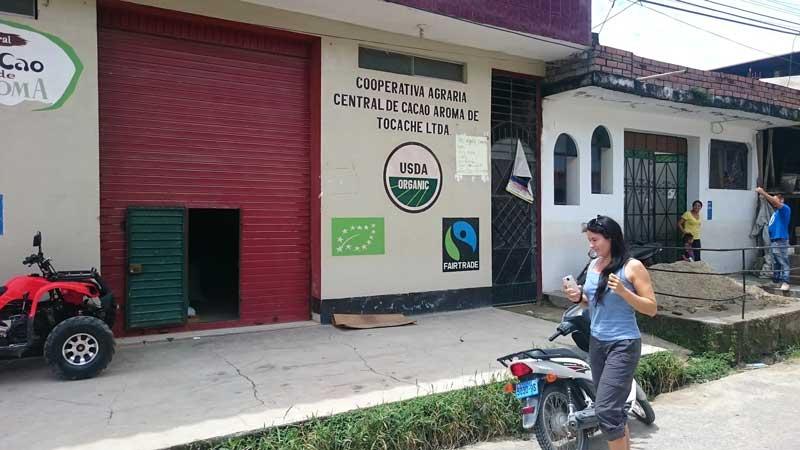
Arrival at the buildings entrance to the cooperative in Peru. On the right, Tereza Havrlandová, the owner of Lifefood. Inspection and meeting with our friends can begin.
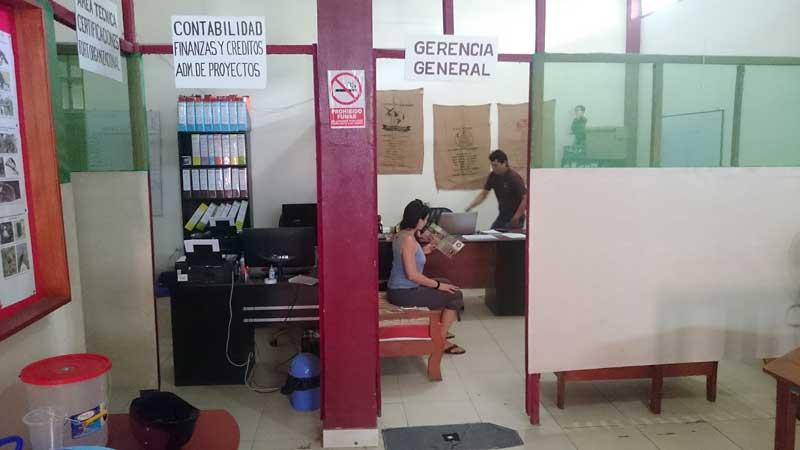
Tereza sits in the admission office. Folders, cleanliness, general order - locals pride themselves in their work.
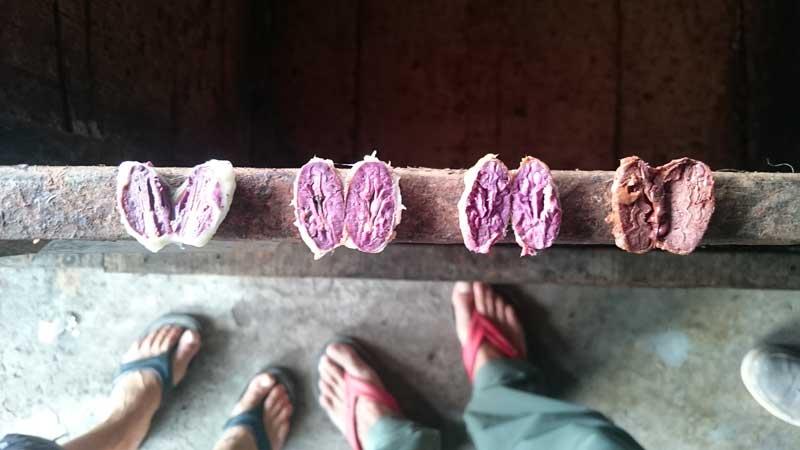
And here they are! Cocoa beans! They are beautiful! A plant that has been spinning the world for millennia. Chocolate, originally a drink dedicated only to the ruling castes of the Aztecs and Mayans, literally means hot water. It was originally a bitter drink. It was not until the Spaniards began to add sugar to it and they kept the aristocratic Europe addicted to chocolate for a hundred years. Then, thanks to the industrial revolution the processing of cocoa became simplified and chocolate became known to a wider public - the first legendary truffles were created and chocolate flooded the world. Interestingly - did you know why each cocoa pod has a different colour? It indicates a different degree of fermentation. The completely purple ones are absolutely fresh and utterly bitter and as bitter as aspirin. The fermented beans are brown in colour.
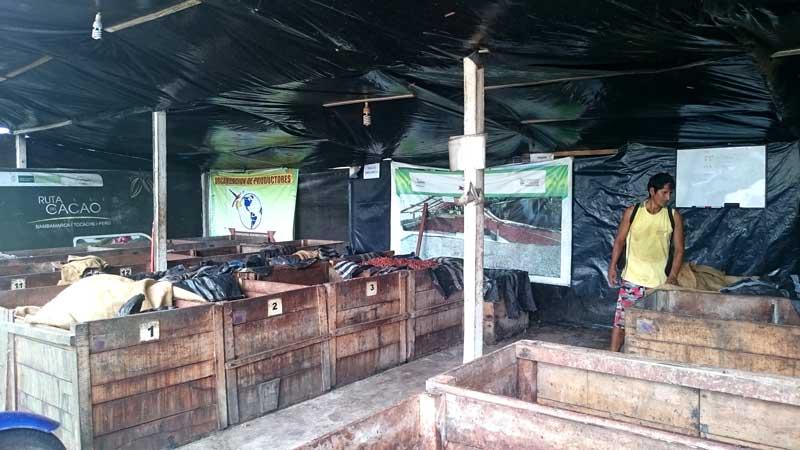
However, the mass popularity of chocolate carries some negative aspects with it - above all the disproportionate pressure on cocoa beans production. Cocoa beans have been and are a main means of making money in the Third World countries, unfortunately at the expense of local nature. This is why there have been recent initiatives that are promoting/taking care of the sustainability of cultivation. ORGANIC certification is one of the assurances that cultivation is in accordance with local nature and no chemical is being used. For us, this is the only possible way. The illustration shows the collection containers for the fruits that have just been harvested. The fermentation has already started.
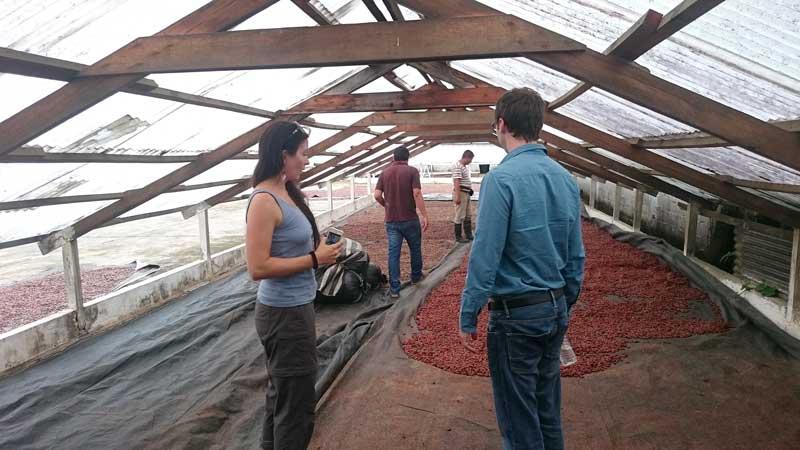
The drying room. Old practices are honoured on this farm and the fruits dry naturally in the sun or at a natural temperature. This is the first and most important step to keep the plant fully raw, ie not to expose it to classical drying procedures such as hot tunnels, etc. This is the pre-drying phase, where the beans still can ferment. The roof protects the beans from possible rain. Full drying happens in the next stage in the open space under the sun.
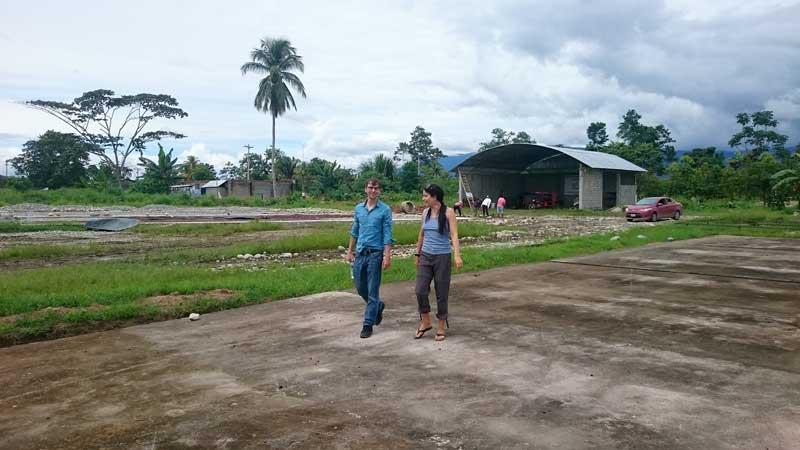
We set off across the grounds to a field where we meet the workers and the plants.
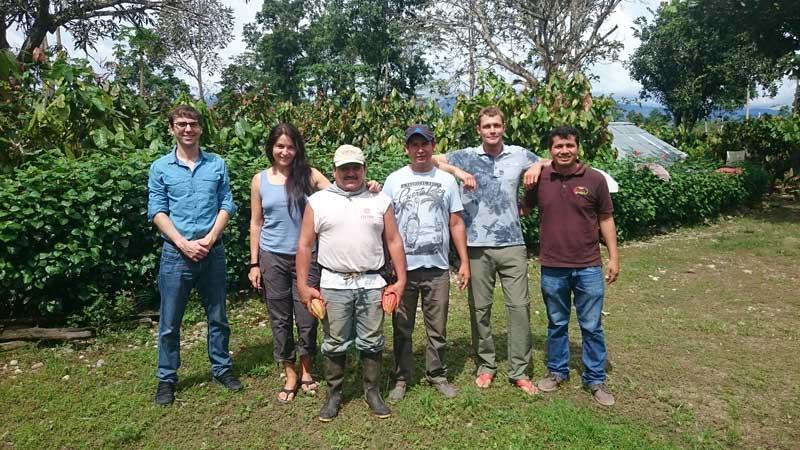
Here they are! Strong guys - they have families and lots of kids at home. On the left, Daniel, our translator and the owner of the company, who buys the beans from the cooperative and processes them into powder, butter, nibs and more. He is the one, who provides all the certifications, and laboratory analyzes, etc for us. Furthermore, the picture shows Tereza, Manu, Pedro, Hans - another representative of Lifefood and finally Jorgé. In a country where there is not much work, they value their opportunity to work on the plantation and they are proud that their country is known for producing excellent cocoa, "It is better than being continously associated with drugs and gangs," Daniel says.
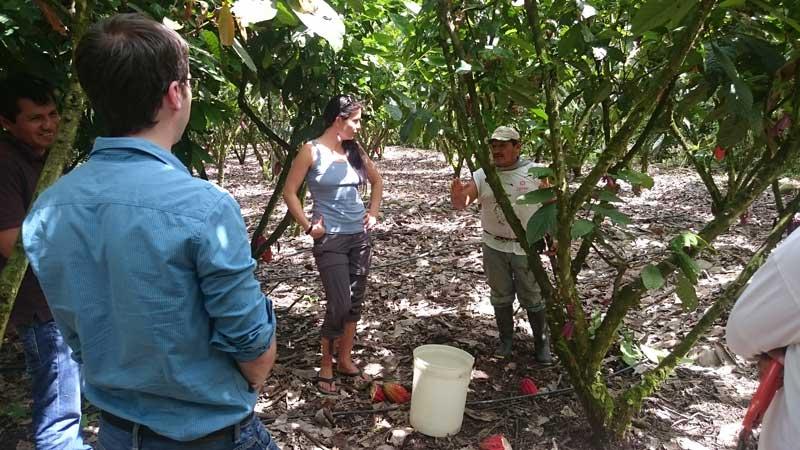
Manu talks about cocoa engagingly. For example, it is interesting that it is possible to see blossom, small plant and fully ripe cocoa beans on one plant. Do you know what colour the ripe cocoa bean is? Interestingly, many farmers, including these, have switched to cocoa cultivation from coca cultivation. The Peruvian Government strongly supports this transition. Cocoa, and especially ORGANIC certified cocoa, is getting more and more valued in the world markets and is pushing out coca, which associated with crime and violence. This is a win-win situation where everyone is happy.
And one more video: Terez shares with you what she has learned on the farm - for example, what is the origin of cocoa or what types of cocoa beans there are.
And here is the description for to the photo at the very beginning of the article – You can see Terez on it with another farm owner, called Messi. Yes, his named after a famous soccer player Messi, because each season he produces the most beans on his few hectares.
We will continue our report from the farm soon!

